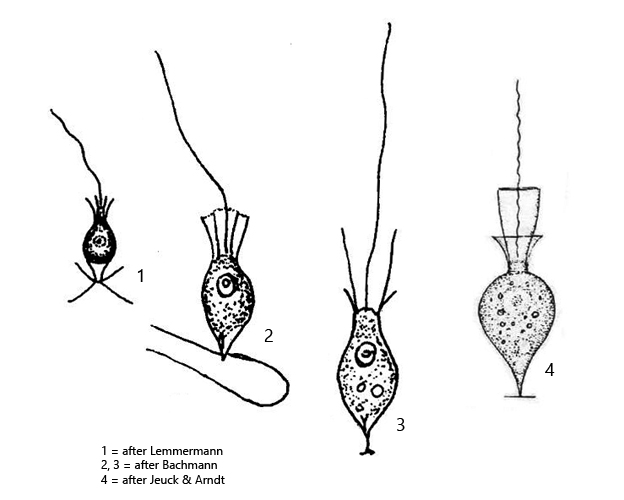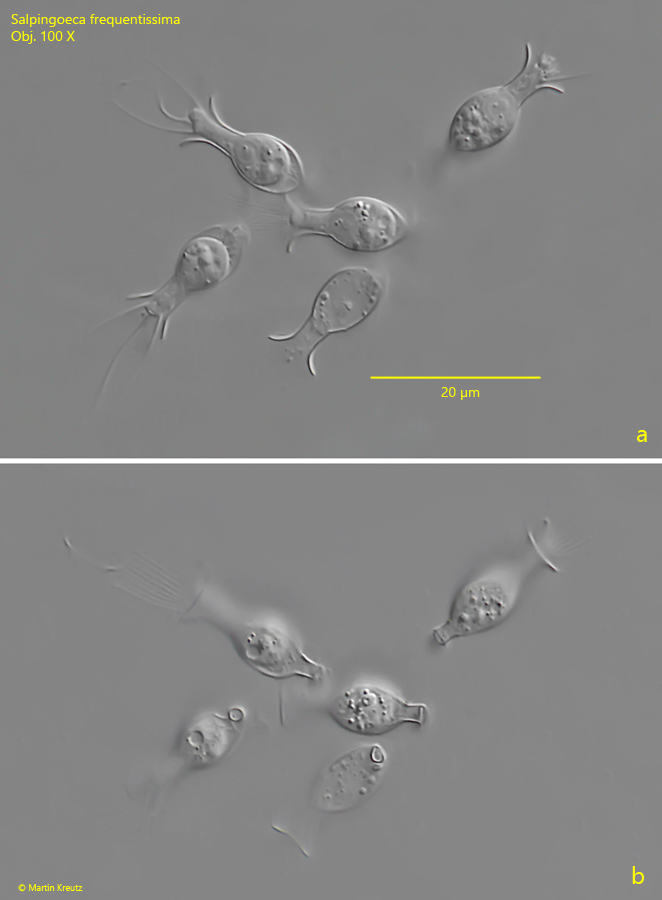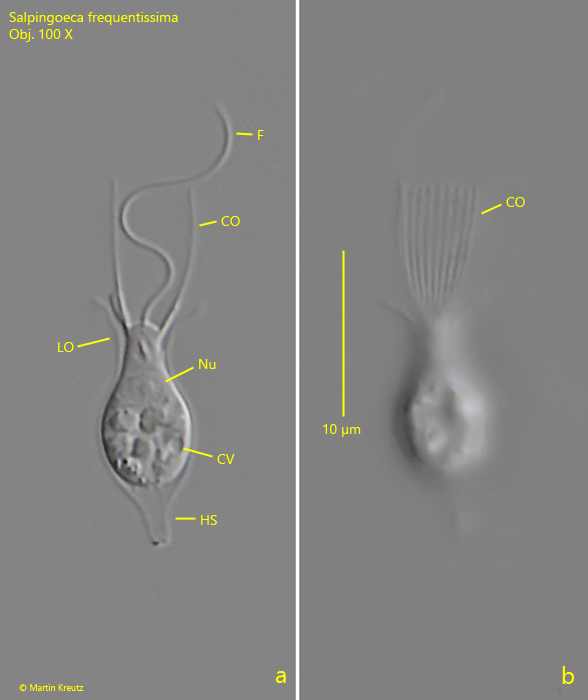Salpingoeca frequentissima
(Zacharias) Lemmermann, 1913
Most likely ID: n.a.
Synonym: Diplosiga frequentissima
Sampling location: Simmelried
Phylogenetic tree: Salpingoeca frequentissima
Diagnosis:
- lorica vase-shaped with hollow stalk, opening distinctly widened
- length 10–11 µm (of lorica)
- cell fills globular part of lorica
- one single flagellum, 2–3 times of cell length
- base of flagellum surounded by circular collar of microvilli
- one nucleus in anterior third with spherical nucleolus
- one contractile vacuole in posterior third or center

I have so far Salpingoeca frequentissima only recorded in the Simmelried, but the species is probably also present in my other sampling sites, as it is a very common species. Salpingoeca frequentissima is best observed when specimens settle on the floating coverslip.
The specimens I found had a length of 14–17 µm (of lorica), which is somewhat longer than stated by Huber-Pestalozzi (1941). However, the shape of the shell corresponds exactly to his description. The hollow stalk of the case is not filled by the cell. The opening of the lorica is widened like a funnel, with the upper edge of the lorica being wider than the center (s. fig. 1 a). The nucleus is located in the upper third with a distinct, spherical nucleolus. The flagellum is surrounded at its base by a ring of fine microvilli, which form a collar. The collar was 8–10 µm high in my specimens (s. fig. 2 a-b).
Salpingoeca frequentissima can be distinguished from the similar species Salingoeca amphoridium and Salpingoeca convallaria by the shape of the lorica. Salpingoeca amphoridium has no stalk and the body is piston-shaped. In contrast, Salpingoeca convallaria has a distinct, thread-like stalk and the opening of the lorica is narrower than the center.

Fig. 1 a-b: Salpingoeca frequentissima. L = 15–17 µm (of loricae). Two focal planes of a small group of specimens. Note that the openings of the loricae are wider than the center. Obj. 100 X.

Fig. 2 a-b: Salpingoeca frequentissima. L = 16 µm (of lorica). Two focal planes of a detached specimen. Note the collar (CO) of microvilli surrounding the base of the flagellum (F). CV = contractile vacuole, HS = hollow stalk of lorica, LO = lorica, Nu = nucleus. Obj. 100 X.